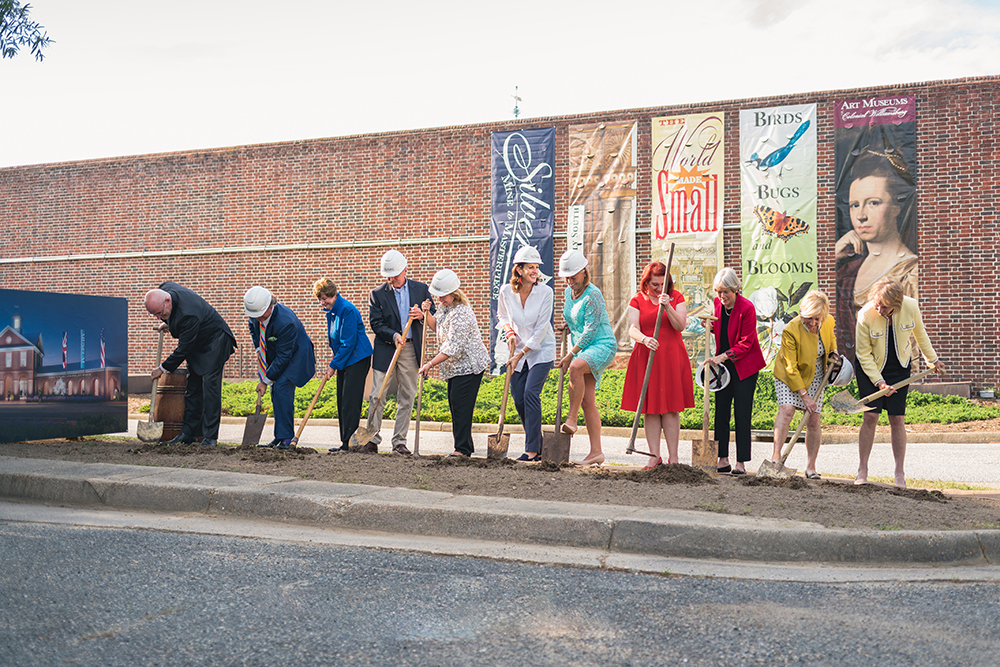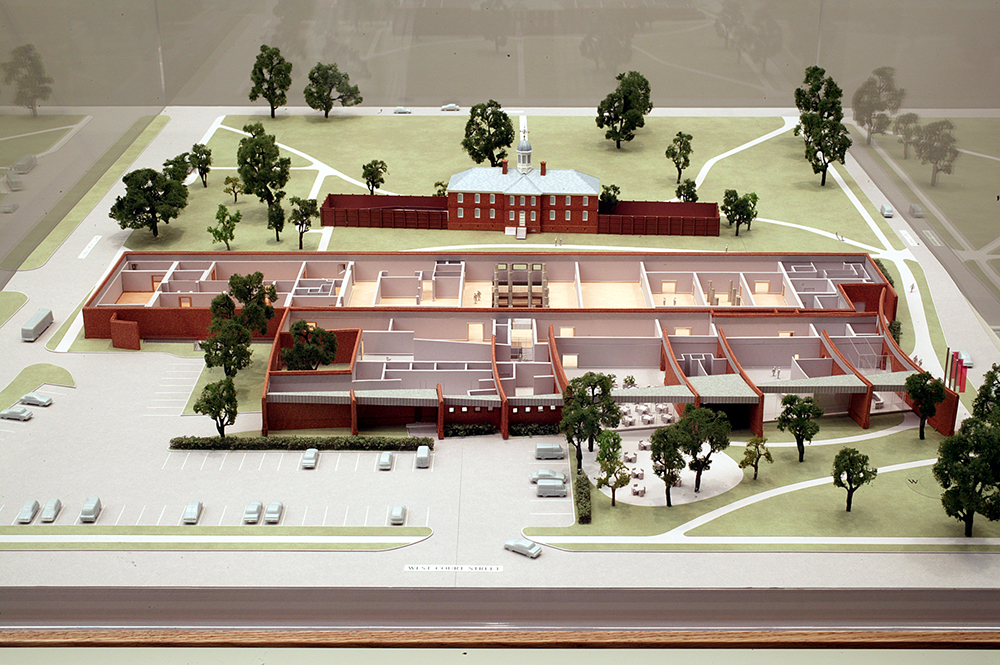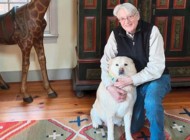
Members of the Art Museums of Colonial Williamsburg board break ground April 27 on the $40 million expansion of the Art Museums of Colonial Williamsburg: the Abby Aldrich Rockefeller Folk Art Museum, celebrating its 60th anniversary year, and the DeWitt Wallace Decorative Arts Museum.
WILLIAMSBURG, VA. — Nearly two and a half years after announcing the public phase of a $40 million capital campaign with its goal met, the Art Museums of Colonial Williamsburg held a groundbreaking ceremony April 27, on the site where construction is set to begin on the first large-scale expansion and upgrade to its building.
The project, the primary capital priority of the Colonial Williamsburg Foundation’s $600 million Campaign for History and Citizenship, will significantly enhance the home of the Abby Aldrich Rockefeller Folk Art Museum, currently celebrating its 60th anniversary year, and the DeWitt Wallace Decorative Arts Museum.

A cut-away model of the Art Museums of Colonial Williamsburg’s expansion looking north toward the Public Hospital of 1773. The expansion (shown in foreground) will add more than 60,000 square feet for a 22 percent increase in gallery space as well as a new entrance facing South Francis Street (left).
Mitchell B. Reiss, president and CEO of the Colonial Williamsburg Foundation, welcomed guests, including Art Museums Board members, CWF Trustees, major donors to the Art Museums, as well as several state and local officials. Henry C. Wolf, chairman of the CWF Board of Trustees and vice chairman and CFO-retired of Norfolk Southern Corporation in Norfolk, Va., and Sheila Miller, chair of the Art Museums Board, made brief remarks, as did Ronald L. Hurst, Colonial Williamsburg’s Carlisle H. Humelsine chief curator and vice president for collections, conservation and museums, who also served as the master of ceremonies for the groundbreaking.
“The Art Museums’ expansion is a fundamental component of our core mission,” Wolf said. “It is being completely funded with dedicated donor funds and not with the Foundation general endowment.”
“The Art Museums of Colonial Williamsburg are treasured institutions in which guests experience both the world’s premier collection of American folk art and our nation’s early decorative culture,” said Reiss. “The critical work that begins today, made possible wholly due to our supporters’ foresight and generosity, will allow us to improve the visitor experience, draw more visitors, and more appropriately display our world-class collection.”
Following the remarks, members of the Art Museums Board, each wearing a hard hat with the Art Museums of Colonial Williamsburg logo on the front and their name on the back, along with donors who contributed $1 million or more to the expansion campaign, dug into the ground with replica, Eighteenth Century shovels and hoes. Other guests, including staff of the Art Museums and the Colonial Williamsburg Foundation and general public who attended the ceremony, were invited to participate and break ground so as to include as many people as possible in this momentous aspect of the project.
When the expansion is complete, the new wing will add 60,000 square feet to the Art Museums, offering a 22-percent increase in gallery space. This will enable considerably more of the celebrated collections to be on view. New galleries will be designated for an introduction to the Art Museums; folk art; coins, currency and medals; archaeology; musical instruments; costumes; maps, prints and drawings; toys and dollhouses; tools, weapons and scientific instruments; architectural preservation; paintings; silver and metals; and an additional space for changing exhibitions.
The expansion will also significantly improve public access to the building through a new visitor-friendly entrance on South Nassau Street. This new entrance will replace a circuitous, partly-underground route with a tunnel and multiple stairs through the reconstructed Public Hospital of 1773, which was the first building in North America dedicated to treatment of the mentally ill.
Additional improvements will include a new lobby and orientation space overlooking the pastoral site of the John Custis House and Garden, and a grand concourse that will provide access to both museums, guest services, programming and activities and mechanical and climate-control systems.
Samuel Anderson Architects, based in New York City, designed the expansion. The same firm in 2006 designed the space that now houses the Abby Aldrich Rockefeller Folk Art Museum when it moved from its previous location. It is expected that the expansion construction will take approximately 24 months to complete.
For more information, www.colonialwilliamsburg.com or www.history.org.



